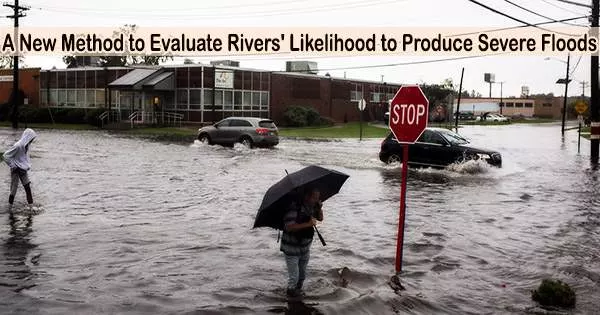The Helmholtz Centre for Environmental Research-UFZ has four hydrologists and geoscientists who have created a novel method to evaluate a river’s likelihood to produce catastrophic floods.
In their study, reported in the journal Nature Geoscience, Stefano Basso, Ralf Merz, Larisa Tarasova and Arianna Miniussi developed an approach based on the analysis of stream networks. Cédric David and Renato Frasson, with CITs Jet Propulsion Laboratory have published a News & Views piece in the same journal issue outlining the work done by the team in Germany.
In the beginning of their study, the researchers noted that river floods are one of the more frequent and dangerous natural disasters, affecting millions of people annually throughout the world.
They added that it can be difficult to anticipate the danger of high floods in areas that have never experienced them and that doing so required a complete understanding of the variables that can affect flood genesis and propagation.
The spatial organization of stream networks, they note, is one such aspect. How water is distributed and channeled throughout the terrain can have a significant impact on the size of a disaster associated with a specific flood.
The research team suggests a novel approach for evaluating rivers’ tendency to produce major floods based on an examination of long-term hydrology records and process-based models for flood hazard assessment in order to improve forecasts.
The team was able to demonstrate that the structure of stream networks and the different types of river flow control the onset of floods by defining discharge thresholds that indicate the change from a gradual to an abrupt increase in flood magnitude using data from more than 3,000 river basins in Europe and the United States.
The researchers also discovered that basins with high drainage density, low channel slopes, a high hydrograph recession exponent, and a substantial fluctuation in daily flows are more prone to have flood divides. These measurements are a reflection of the inherent characteristics of river basins that affect their capacity to store and discharge water during flood occurrences.
The research team comes to the conclusion that it is possible to forecast catastrophic floods without exclusively relying on historical flood data by studying the typical discharge dynamics of rivers.
In a world that is changing and where extreme floods are anticipated to become more regular and severe, the strategy may help to improve flood risk management and aid in the development of adaptation plans.
















